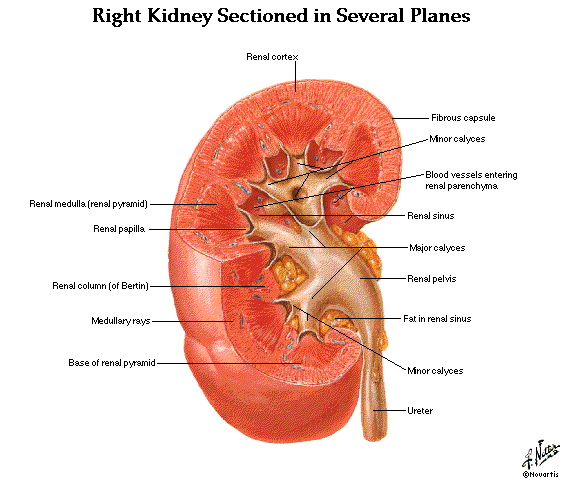
The photo to the left shows a potential kidney stone as it might travel through the body.
While visiting your doctor/hospital, urine and blood tests will be run as well, to get a better idea of why your body formed the stones. However, these tests are rarely conclusive.
If the stone is too large to pass, extracorporeal shock wave lithotripsy may be used; this process uses shock waves to pulverize the tiny, dense stone. The fragments are then relatively easily passed through the body. Percutaneous necrolithotomy is another method that can be used; a small incision is made in the back, tunnelling straight to the kidney housing the stone. A necroscope is then used to extract the stone. If the stone is huge, ultrasonic or hydraulic energy may be used to fragment the stone first, before extraction. If the stone becomes lodged in the ureter and not the kidney, another method may be used: uteroscopic stone removal. This final method uses a fiberoptic uteroscope to locate the stone (think catheter shoved past the bladder into the ureter), then implements a cage-like device to remove it. Again, sonication may be used to break the stone.
Once that pesky stone has been handled (either naturally removed or doctor-removed), most treatments involve pain medication, antibiotics if there was an infection, and a possible change in diet. Individuals with oxalate-containing stones may want to decrease the amount of spinach, beets, chocolate, peanuts, and other oxalate-rich foods they ingest. Individuals with calcium-containing stones need not avoid milk, cheese and yogurt. Salt can leech calcium, so decreasing sodium and other salt intakes, while increasing water, are other beneficial ways to hopefully prevent future stones from forming. Unfortunately, it is unclear if changes in diets decrease kidney stone frequency or prevalance.
Just remember-this too shall pass. :)

